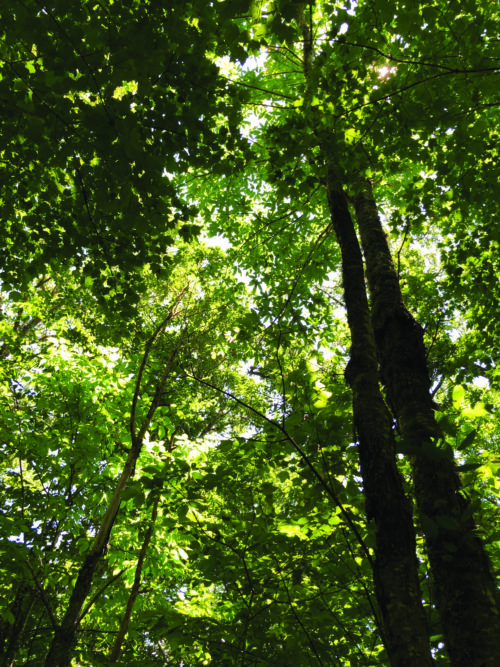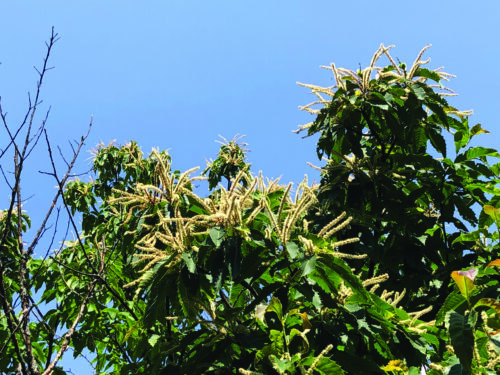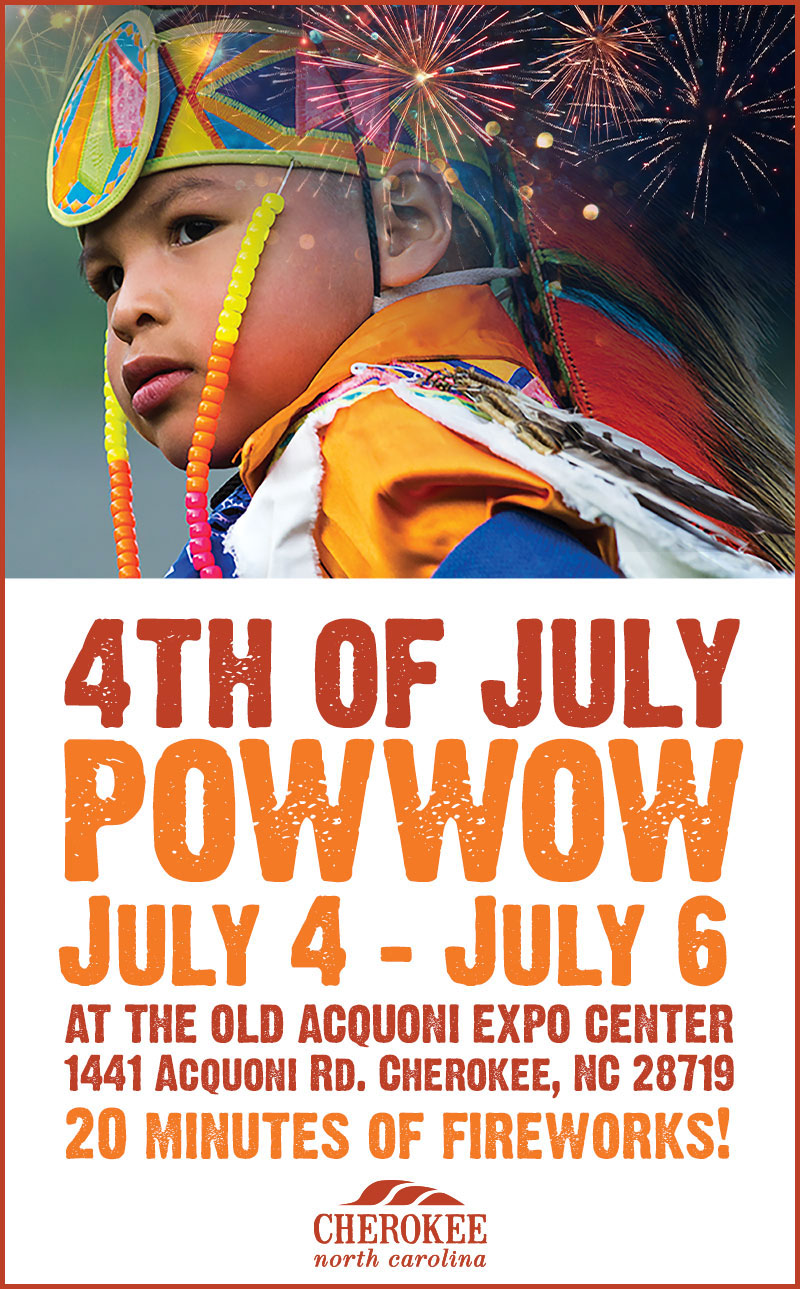By JAIME VAN LEUVEN, TOMMY CABE, and MIKE LaVOIE
EBCI Natural Resources
During the summer of 2021, Tribal Reserve was surveyed for reproductively mature American chestnut (Tilĭ΄, Castanea dentata) trees. The survey supports a larger collaborative effort between the Eastern Band of Cherokee Indians (EBCI) Natural Resources Department and The American Chestnut Foundation to restore this culturally significant tree to the Qualla Boundary (see the Cherokee One Feather Oct. 12, 2020 edition for more information about this collaboration). The Cherokee people have had a relationship with Tilĭ for thousands of years—a relationship that continues today with the making of chestnut bread every fall (though, Chinese chestnuts, Castanea mollissima, have mostly replaced American chestnuts in the recipe).

The tallest, mature American chestnut found in Tribal Reserve towers into the forest canopy. (Photo by Jaime Van Leuven)
For a tree to be considered reproductively mature, it needs to be able to produce flowers and/or fruit. It is rare to find a reproductively mature American chestnut tree today due to the chestnut blight—a fungus (Cryphonectria parasitica) that enters through cracks in the bark and can kill the tree’s above ground stems. The chestnut blight eliminated most mature American chestnut trees from eastern forests, and though American chestnuts are known to sprout from the surviving stump, the new shoots rarely grow to maturity before the fungus brings them down. This is why chestnuts from the Chinese chestnut tree have mostly replaced American chestnuts in Cherokee chestnut bread. Chinese chestnut trees have a high tolerance to blight because they evolved with the fungus over millions of years.
Jaime Van Leuven, field naturalist and then graduate research assistant at the University of Vermont (UVM), was hired by the EBCI Natural Resources Department to conduct the survey due to her background in plant biology and her experience with field surveys. Josh Istvan, EBCI GIS specialist, helped create a map of Tribal Reserve to facilitate Van Leuven’s search. Members of the EBCI Fisheries & Wildlife Management Program – specifically Dallas Bradley, Micah Walker, Caleb Hickman, Nicholas Reed, and Jessica Nagel – oriented Van Leuven to the roads and trails.
Van Leuven consulted the literature, the EBCI Natural Resources Department, community members, her committee at UVM, and ecology professionals in the area about likely places to find American chestnut within the reserve. In the 20 days spent surveying the reserve, Jaime found eleven reproductively mature American chestnut trees. Consequently, these trees could play a role in the American chestnut restoration effort in the Qualla Boundary.
Finding mature American chestnut trees can help restore this culturally significant tree to Tribal land in a number of ways. First, finding mature trees indicates places within Tribal Reserve with beneficial growing conditions for American chestnut; these places may represent ideal locations for restoration plantings. Second, previous research has found that trees surviving into maturity may have some low-level resistance to the blight; pollen from these trees could be collected and preserved so that the trees’ genetics could one day be part of a breeding program—such as that conducted by The American Chestnut Foundation. Nuts from surviving trees could also be collected for propagation in the EBCI’s chestnut orchard which is another way to preserve desirable traits such as potential low-level resistance to the blight (see the Cherokee One Feather Oct 27, 2021 edition for more information about the chestnut orchard).

A flowering American chestnut tree in Tribal Reserve.
The next phase of the EBCI American chestnut restoration project will be highlighted in an upcoming Cherokee One Feather article. This next phase will include community outreach about how the EBCI would like to restore this culturally significant tree to the Qualla Boundary.
This survey was conducted with help from the EBCI Natural Resources Department, the EBCI Fisheries & Wildlife Management Program, the EBCI Division of Operations, Joe Pye Ecological Consulting, the USDA Forest Service, and the University of Vermont. To hear more about the survey and its results, tune-in to Timber Committee on Aug. 21 for Van Heusen’s presentation. For other Cherokee One Feather articles featuring the EBCI’s American chestnut project, see Oct. 12, 2020; July 15, 2021; and Oct. 27, 2021 editions.






